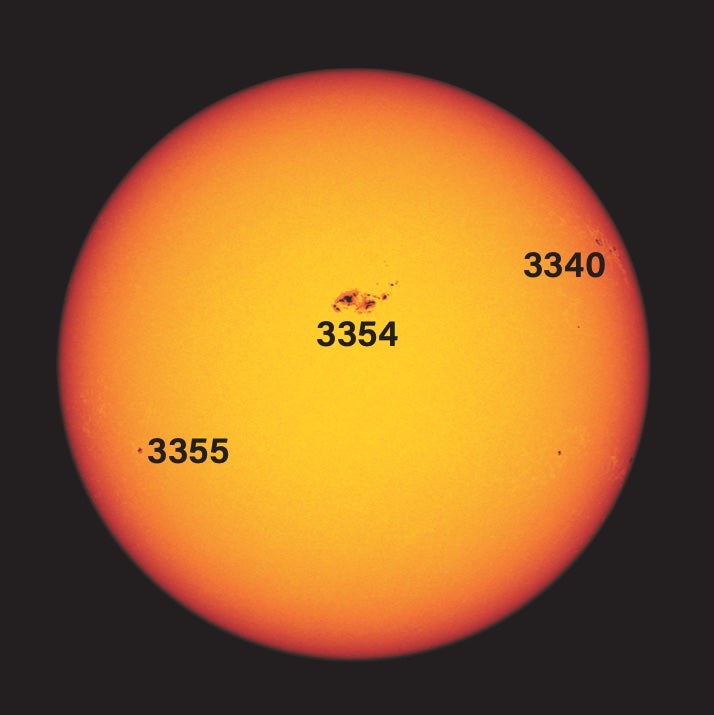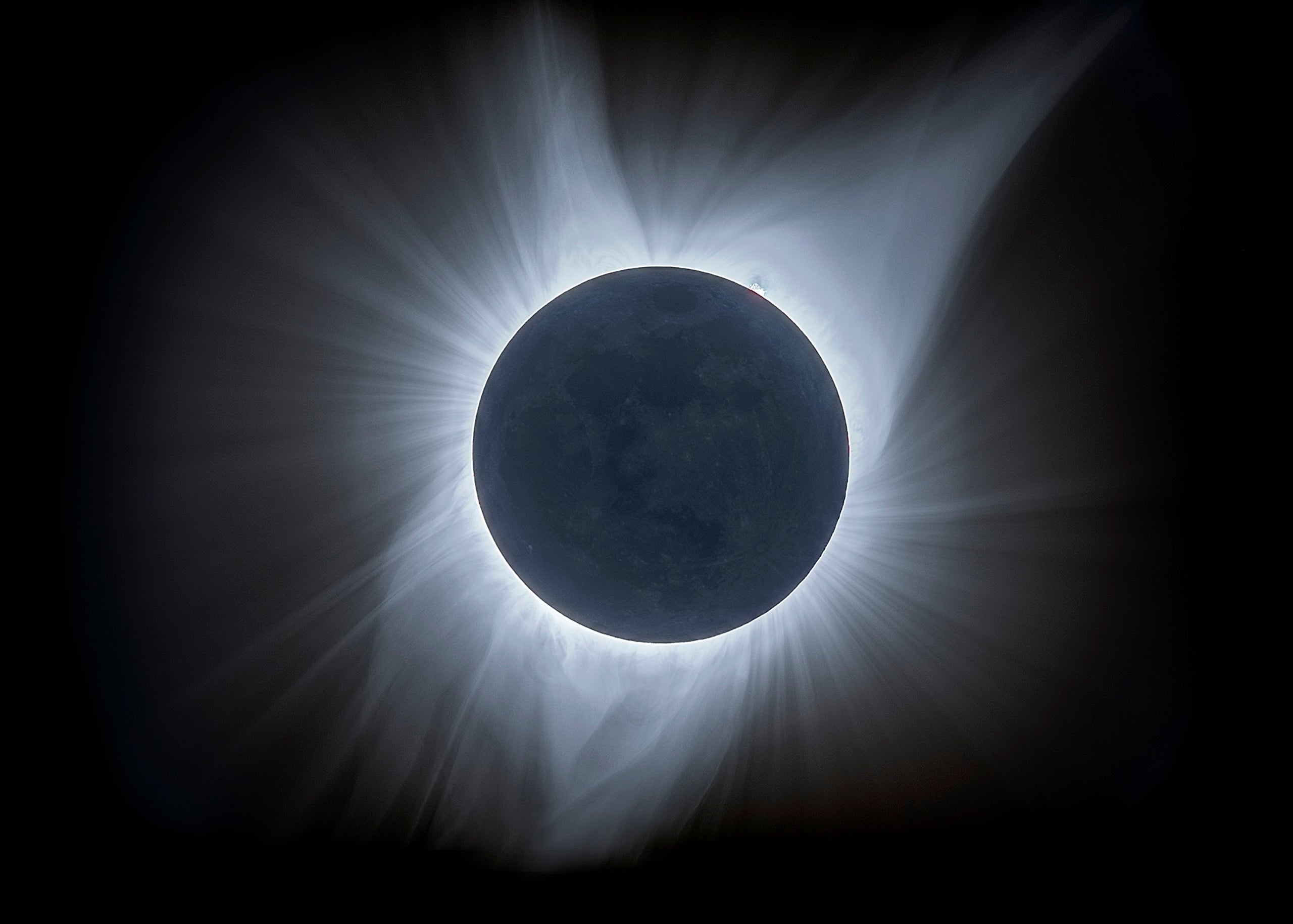
During partial phases of a solar eclipse, one popular activity is to project and capture solar crescents when trees are in leaf. Tiny spaces between leaves can act as natural pinhole cameras, projecting dozens of solar crescent images on the ground. But such projections aren’t only visible when there’s an eclipse — they can display the Sun as full circles of light on any sunny day.
With solar sunspot activity soaring and naked-eye sunspots on the rise, I wondered if these natural solar projections would provide crisp enough images to display naked-eye sunspots. Turns out, they can.
The crispness of the image depends on how far away the pinhole is from the surface that it is projected upon. (A piece of paper or cardboard works well.) When the pinhole is close to the surface, the image is rather sharp. But there’s a trade-off: The shorter distance causes the sharp image to be smaller and brighter — sometimes too small and intense to see a naked-eye sunspot. Conversely, if you stand too far away, the image will appear larger and fuzzier, washing out any definition of smaller naked-eye sunspots. This is where finding a Goldilocks position is key.
Solar circles
My initial studies reveal that a solar disk about 1 to 2 inches (2.5 to 5 centimeters) in diameter is ideal. This, however, is a work in progress, so your results may differ. Finding the best projected discs requires a critical and patient survey of all the disks projected onto your surface. The circles can pulse in and out of focus, or nervously overlap, especially when the wind blows. It takes time.
Moderately dim disks seem to work best. Patience is also key in this activity, so be sure to scan and even rescan the images. Using a larger tree (with enough gaps to create projections) vs. a smaller tree that’s more susceptible to the wind will help greatly.
Targeting sunspots
This leads us to the question of how large of a spot a natural “pinhole” can show. Again, your results may vary. I find when looking through a No. 14 welder’s glass directly at the Sun, I can usually detect sunspots that span about 1.5 Earth diameters or more. Naturally, the larger the solar spot, the easier it is to see. If you don’t have solar-safe glasses, the website of NASA’s Solar Dynamics Observatory offers daily images of the Sun.
My first projected sunspot occurred in May 2023, around the time when complex (and highly elongated) AR 3315 appeared on the Sun’s face. Although I first saw the spot through a No. 14 welder’s glass on May 25, I did not see it via projection until May 27, when it was about 5 Earth diameters. A special day came on June 29, when AR 3354 rapidly grew to 10 Earth diameters. It was so large that I easily saw it projected onto the floor of a dance studio through an artificial hole in the roof. I was able to follow AR 3354 by leaf-hole projection until July 2, when it shrank to about 2 Earth diameters on one remarkably crisp projection.
The reigning sunspot to date is AR 3363 — the same spot that the Perseverance rover imaged from the surface of Mars. I was able to naturally project its image on July 8 — two days after it first appeared on the Sun’s disk. I then followed it daily as the Sun rotated.
Projecting natural sunspots is truly a challenge. If you succeed, I would love to hear about it; as always, send what you see or don’t see to sjomeara31@gmail.com.









